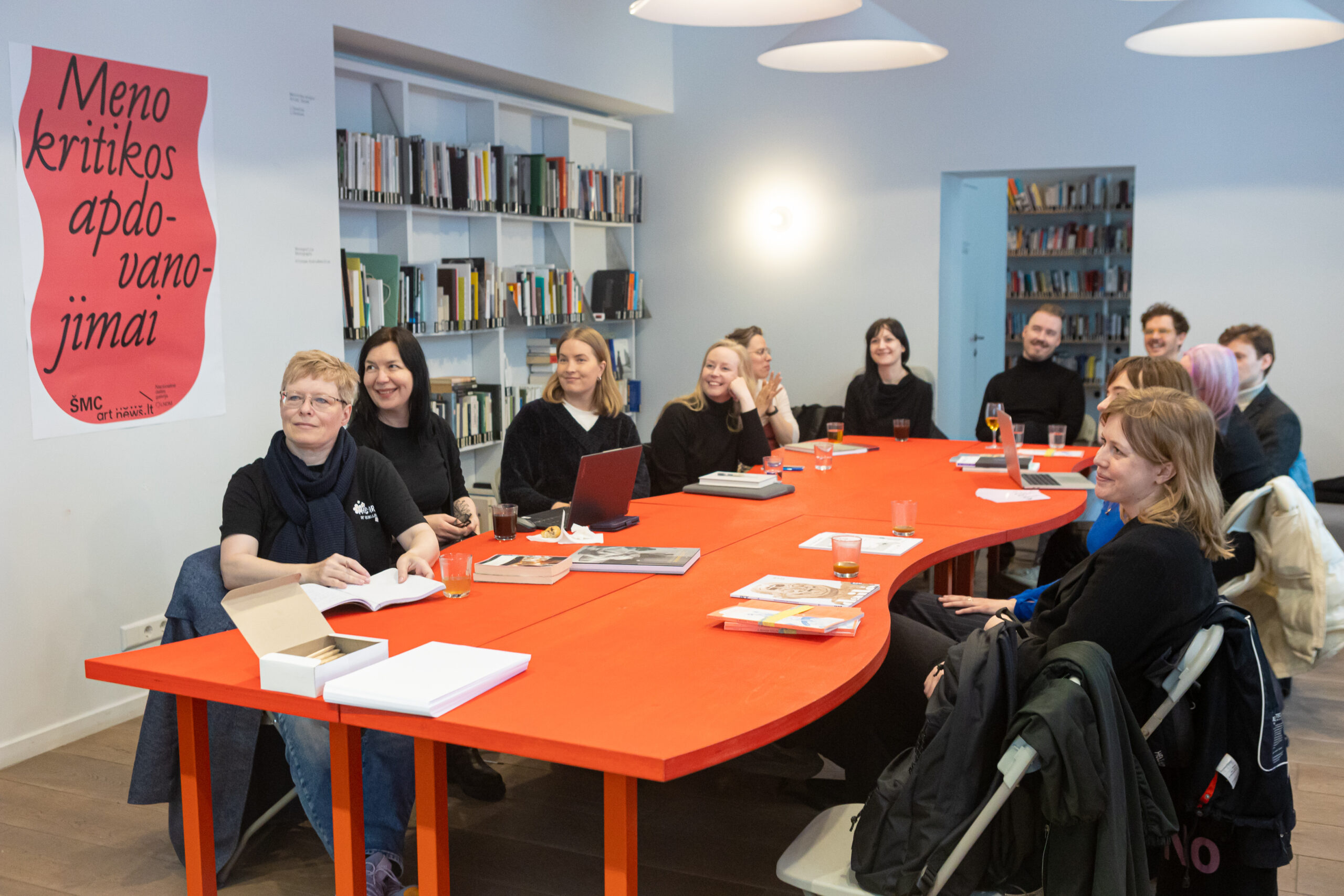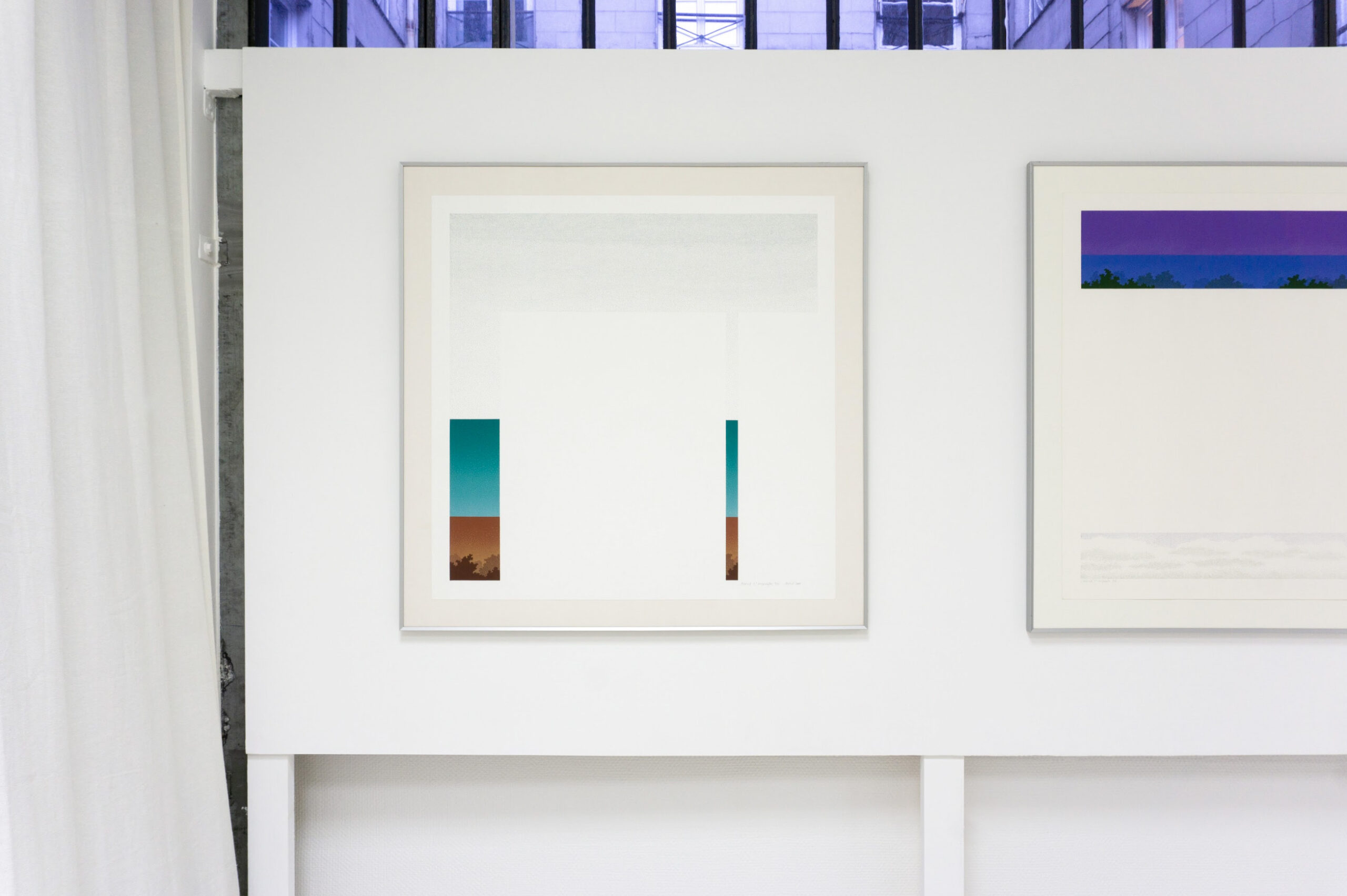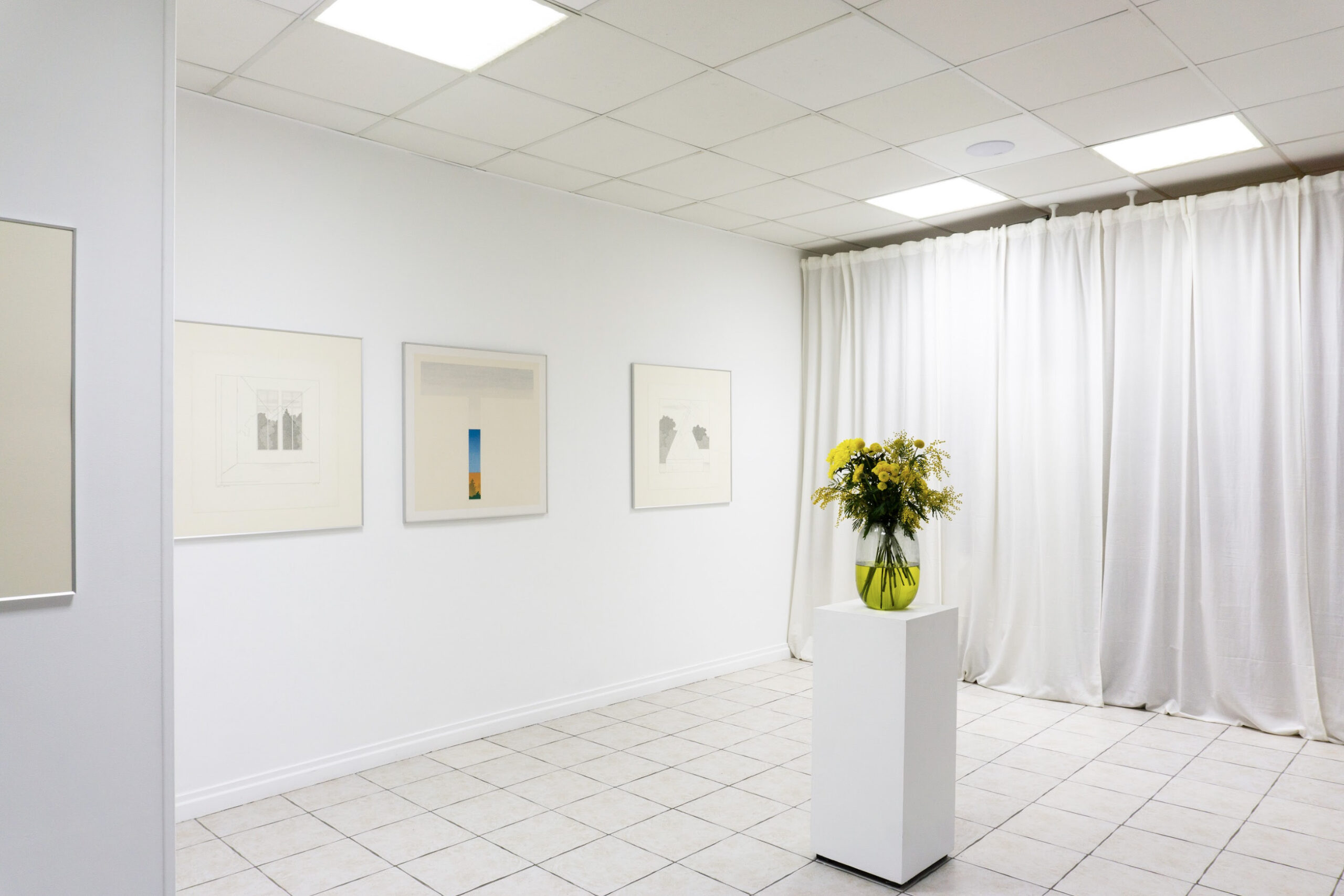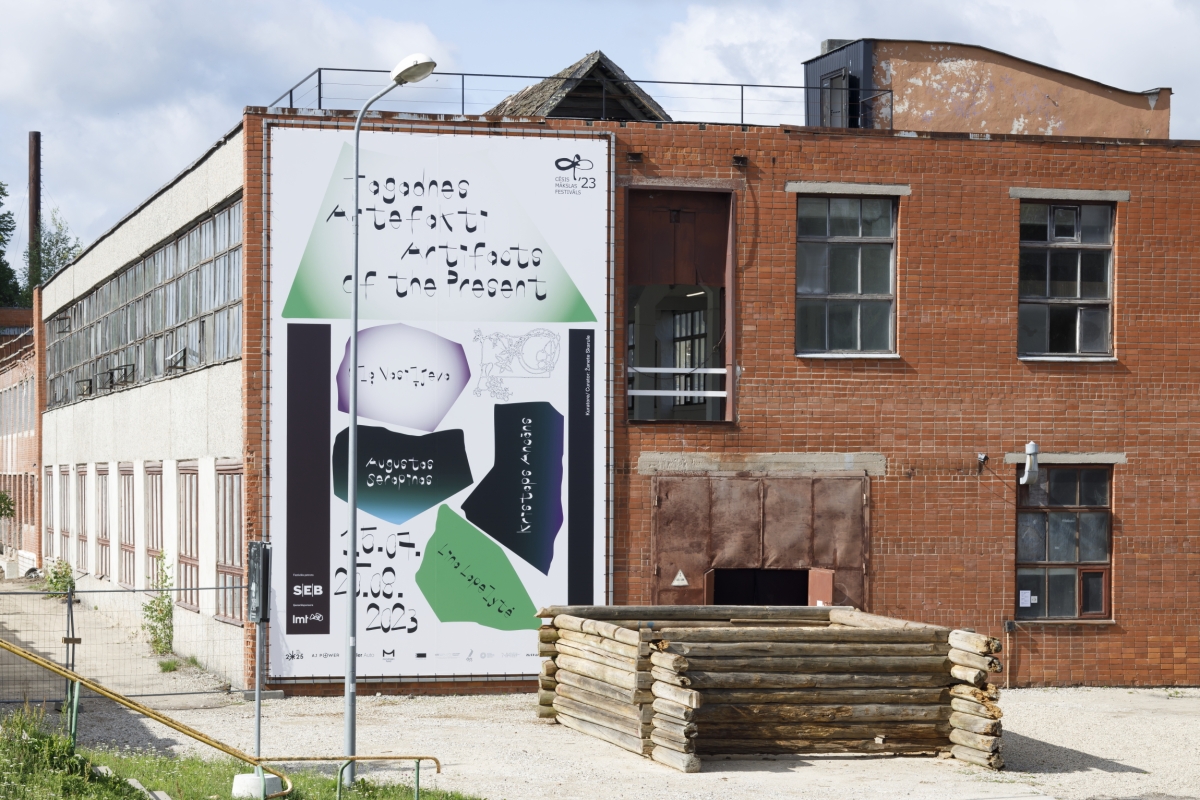
In an interview for Blok magazine with Bojana Pejić, the Belgrade-born curator and art historian recalled Salman Rushdie’s words, “We are all translated people” in relation to her own experience of moving to Berlin: “(…) since I came to Berlin, the most important people were not my partners or lovers, but the proofreader, the copy editor, a native speaker. Because through them, my voice is heard.”
Undeniably, English is the lingua franca in the art world, and at least in larger cities in the Baltics, art texts are almost always published in two languages in parallel. Speaking of Latvia more specifically, Valts Mikelsons, a writer, curator and translator, says: "In Riga, it very much appears to be the norm to translate exhibition texts into English. Outside of Riga, it is a mixed bag. Therefore, the Rothko Centre in Daugavpils consistently translate their exhibition texts, but the Daugavpils City Museum (as far as I am aware) does not. Generally, it appears that projects managed by younger curators and involving more contemporary-leaning artists are more likely to offer information in English, even if they take place in a small town.”
The same can easily be said about the art scenes of all three Baltic countries – by now, it is a standard, at least in larger institutions, but also echoed in smaller initiatives – artist-run and independent spaces or student shows. Although in the last 30 years, Russian has lost its once-dominant position, some larger institutions make exhibition information available in Russian as well, as all three Baltic countries have a considerable Russian-speaking population. Mikelsons says that even though the generation who would have used Russian as a language of international communication is probably passing from the scene, he suspects that with the political turmoil in Belarus, Ukraine and Russia and different cultural initiatives resulting from that, there might be a small revival.
We are all international
Regardless, English will probably retain its strong presence for the foreseeable future all across the globe. For better or worse, in the art world more specifically, language has developed into a specific jargon, International Art English (IAE), a term coined by Alix Rule and David Levine in their 2012 essay of the same title. Essentially, IAE is a particular kind of English used by the international art world that has taken on particular lexical, grammatical, and stylistic features and is disseminated via art texts, such as press releases, exhibition texts, and artist and curatorial statements. They write: "Our guess is that people all over the world have adopted this language because the distributive capacities of the internet now allow them to believe – or to hope – that their writing will reach an international audience. We can reasonably assume that most communication about art today still involves people who share a first language: artists and fabricators, local journalists and readers. But when an art student in Skopje announces her thesis show, chances are she'll email out the invite in IAE. Because, hey – you never know.”
English is how small scenes in smaller countries, such as the Baltics communicate; it is not always about the so-called periphery orienting itself towards the centre. That is, the “local” scene in your neighbouring country is, in fact, also an international audience. Not to mention that in terms of accessibility and availability, the meaning of “local” is very different in Riga and London, for example.
English is how small scenes in smaller countries, such as the Baltics communicate; it is not always about the so-called periphery orienting itself towards the centre.
Michael Haagensen, a cultural manager and copy editor who's been working with art texts since the mid-1990s, first in Australia and then in Estonia, also sees English as an important tool to engage with the rest of the world, but especially with our immediate neighbours. He also stresses the role of English in cultural diplomacy: "English texts published in Estonia are also important as a way of creating material that can support the presence of Estonian art at international art events but also for communicating with the institutional network across Europe and the rest of the world – a kind of cultural diplomacy. It would be a travesty if such artists (and art professionals) get stuck in the local market and cannot advance their careers because there are no opportunities for them. The more they can engage personally with the art scene in a place like Berlin or London, the more they become like ambassadors for Estonia, and this effect then snowballs in the way it can involve more and more artists but also in the sense that it can attract artists and art professionals from elsewhere to visit Estonia and engage with the Estonian and Baltic art scene."
As Ilze Jansone, an editor and proofreader in Latvian, points out, the desire to become more internationally visible in the Baltic art field has had a direct and positive impact on art writing – it has improved the desire of writers to contextualise, which helps to put the artwork in the bigger picture. Here, Jansone points to an issue that most writers, researchers, editors and translators working in or with smaller scenes are highly familiar with. A lot of the knowledge that has been produced prior to the last couple of decades is inaccessible outside the local art field both in terms of language as well as legibility. There is a lack of updated information about historical artists, movements, and phenomena that have significantly impacted local art, as it lacks contemporary and wider contextualisation.
The latter is crucial because merely translating does not always solve the issue. Mikelsons explains: "The desire for international visibility probably has increased over the years (although perhaps not exponentially), and a lot of writing on contemporary art seems to follow general international patterns. At the same time, some of the texts being translated do not suggest much awareness of what is going on beyond the borders of Latvia, and some appear outdated even within the local context. I also believe there are texts that probably make very little sense without the knowledge of the local context and writing tradition. However, I probably speak from a fairly contemporary and critical perspective, while the writers of some of these inward- or backward-facing texts might reasonably claim they represent certain ‘conservative’ or ‘traditional’ models, which, of course, is not a specifically Latvian or Baltic, or post-Soviet phenomenon."
Of course, the work museums do is extremely valuable here, but sometimes, these “updates” are also commissioned for specific international projects, which may also mean unsteady project-based funding. Haagensen has noticed that there seems to be less funding for English texts in Estonia in the last five years or so. “In fact, I would say that funding for cultural diplomacy of all kinds has been cut. This is in spite of the fact that artists and art professionals are better equipped and better connected than they ever have been to promote Estonian art abroad. In the 1990s and 2000s, it seemed there was more money and not a very clear idea of how to make good use of it. Now it is the opposite. Estonian art professionals have a much better idea of how to engage with the international scene and how to make best use of the funds, but their slice of the pie is smaller,” he adds.


We are forever translating
The desire to become more international; that is, to read, write and think more in English, has undeniably also had an impact on local languages in the Baltics. English and IAE have definitely found their way into other languages as well – stylistically and even at the syntax level. Probably most people in the art world have had a moment when they look at a text in their mother tongue and think: “We don't speak like that, and we definitely should not be writing like that”, immediately recognising the vocabulary and rhythm of IAE – unfortunately now available in their own language – or just simply a very rough translation of English.
We don't speak like that, and we definitely should not be writing like that
This is a common problem, and as the generations change, there are sometimes "anglicisms" in art, or even English constructions in the sentences, says Jansone. “I do believe that a good art text should be written in good target language (in my case, Latvian). Otherwise, there can be good ideas, interesting reflections, but if the language is weak, the reflections and meaning of the text may skip the reader's mind. Also, I think that it is essential to search for adequate terminology in Latvian, not just use English terminology,” she adds.
This intrusion is perhaps more clearly felt on smaller scales: a small country equals fewer people, a smaller language, a smaller culture, and a smaller art scene. On the one hand, there is probably more awareness of preserving our native languages, but on the other, it also means new influences spread and take over faster. It is difficult to choose the right language – that goes beyond the linguistic aperture; there's often also a different emotional tonality and even vocabulary – especially because English always runs in parallel, it is in the back of the writer's mind.
As highlighted by Mikelsons, there are differences in writing for your local context and for a wider international audience – it’s not about just including more information but can also mean choosing an entirely different writing tradition. As Haagnesen reiterated: “A good art text like any good text is written for its audience. The author must know who he or she is writing for and write to them specifically.” Or as Jansone puts it, "a good art text is a separate piece of art, which adds meaningful information and also an interpretation of the artwork".

Speaking about translating more specifically, Mikelsons finds that sometimes there is only a fine line between good and bad writing and good and bad translating: “A good translation does not draw unnecessary attention to itself. If the reader starts wondering what the original actually says, something is probably not right”. He also finds that a translation should try to accurately represent the original – so, for a poorly-written text, the translation should also be poor, which rather contradicts the idea of transparency. This, however, may not work out so well for the translator: “I tried to be as accurate as possible in translating illogical sentences, incoherent arguments and poor word choices; some would first suspect a bad translation and only then – bad writing.”
Art language, be it IAE or a particular form that has emerged in another language, is a curious thing – it echoes the newest art world trends and offers an extremely concentrated view of the hopes and aspirations people place on art. And, of course, it can be a tool for showcasing personal ambitions and desires, which, when made visible either willingly or by accident, sometimes reveal even more about the writer and the context than was ever intended. Still, most texts are a group effort involving a process of editing and translating that may determine its reach and impact, particularly significant for smaller languages and art fields, where the production volume cannot compete with that of larger scenes. So, indeed, lovers come and go, but to find someone who can make your voice heard in just the right way is not an easy task.